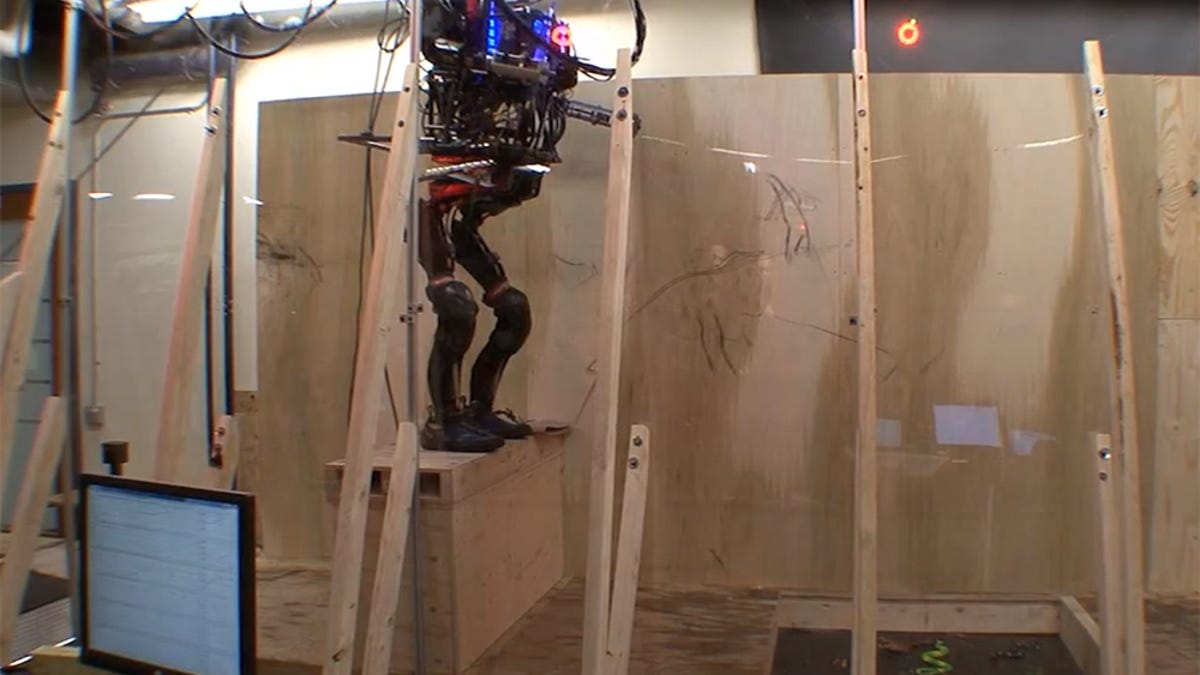Watch this DARPA robot climb, leap, and walk past obstacles
A video from the Defense Advanced Research Projects Agency shows a highly agile robot capable of navigating some serious obstructions.
Prepare to witness a tantalizing glimpse at our future robot overlords.
The Defense Advanced Research Projects Agency yesterday released a stunning video showing how an autonomous robot can navigate and jump over obstacles with great ease.
In the clip, the Pet-Proto robot -- a predecessor to DARPA's Atlas robot -- traverses a simulated hallway containing a very tall step and a thin walkway. Pet-Proto easily uses its strong arms to balance itself as it climbs a step, then perfectly leaps down with a thud. The highly agile walker stretches its legs to continue its journey along the thin edges of a gutted hallway floor.
The video demonstrates some of the challenges that DARPA Robotics Challenge entrants may face in the two-year event that kicked off yesterday. The goal of the competition is for teams to develop the best robot hardware and software that can traverse dangerous environments and aid humans in disaster response scenarios.
Those interested in joining a portion of the challenge may participate by signing up at the related Web site, which also offers an open-source robotics simulator provides "models of robots, perception sensors and field environments, and functions as a cloud-based, real-time, operator-interactive virtual test bed that uses physics-based models of inertia, actuation, contact and environment dynamics."
"One of DARPA's goals for the challenge is to catalyze robotics development across all fields so that we as a community end up with more capable, more affordable robots that are easier to operate," Gill Pratt, DARPA program manager for the DRC, said in a release. "The value of a cloud-based simulator is that it gives talent from any location a common space to train, design, test and collaborate on ideas without the need for expensive hardware and prototyping. That opens the door to innovation."


